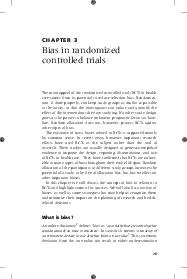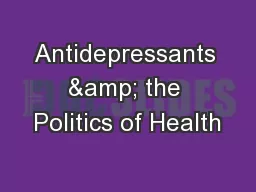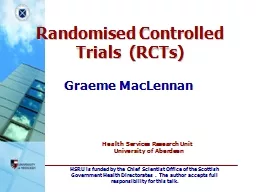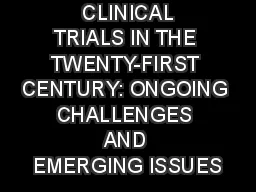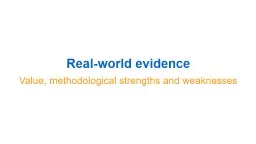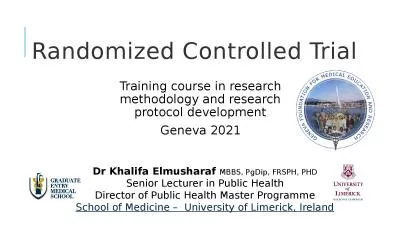PDF-CHAPTER Bias in randomized controlled trials The main appeal of the randomized controlled
Author : myesha-ticknor | Published Date : 2014-12-14
Randomiza tion if done properly can keep study groups as similar as possible at the outset so that the investigators can isolate and quantify the effect of the interventions
Presentation Embed Code
Download Presentation
Download Presentation The PPT/PDF document "CHAPTER Bias in randomized controlled t..." is the property of its rightful owner. Permission is granted to download and print the materials on this website for personal, non-commercial use only, and to display it on your personal computer provided you do not modify the materials and that you retain all copyright notices contained in the materials. By downloading content from our website, you accept the terms of this agreement.
CHAPTER Bias in randomized controlled trials The main appeal of the randomized controlled: Transcript
Download Rules Of Document
"CHAPTER Bias in randomized controlled trials The main appeal of the randomized controlled"The content belongs to its owner. You may download and print it for personal use, without modification, and keep all copyright notices. By downloading, you agree to these terms.
Related Documents

